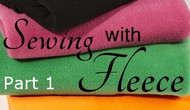Sewing with Fleece... What is Fleece?
2018 Feb 17th
What fabric is warm, cozy, and sews like a dream? I'm talking about fleece, and this is a textile that has SO much to offer! Currently, I have three patterns designed specifically for this wonder fabric, with more to come. There is just so much to love about this fabric!
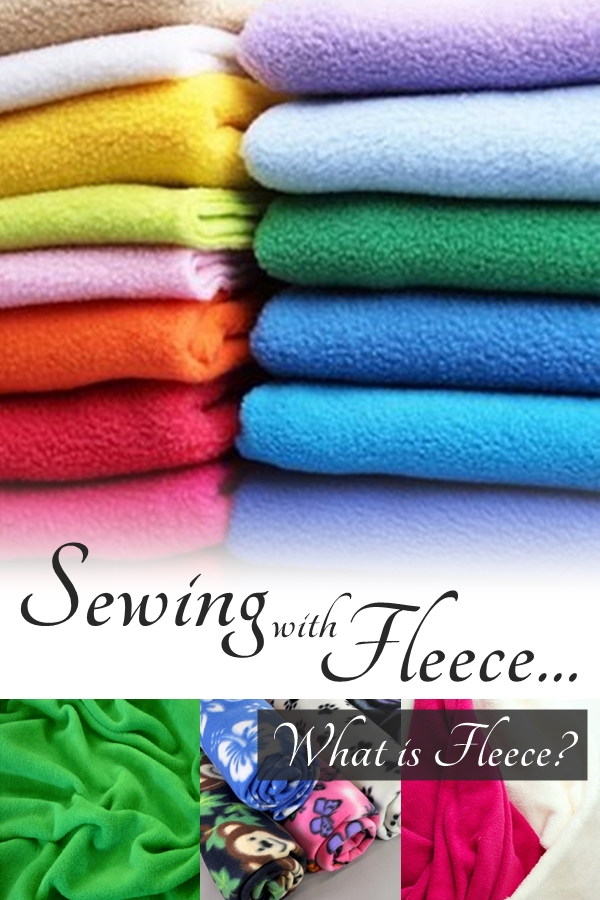
So, what is Fleece?
This might not be a question you initially think to ask, but it's actually pretty important. Through testing my fleece patterns, I have discovered that "fleece" is a category that can include a wide variety or types and textures. In some parts of the world, there are things that are commonly considered to be a kind of fleece, that in other countries would never be thought of under that title. I've done a bit of digging... and I've found that there really isn't a clear industry standard for further defining types of fleece that have different characteristics. To complicate things further, there are also trademarks that conflict with naming some of these fabric variations, so narrowing things down clearly for everyone is not easy.
Why does this matter? Because if you are sewing a pattern that is designed for a certain type of fabric, you want to be sure you have the right kind.
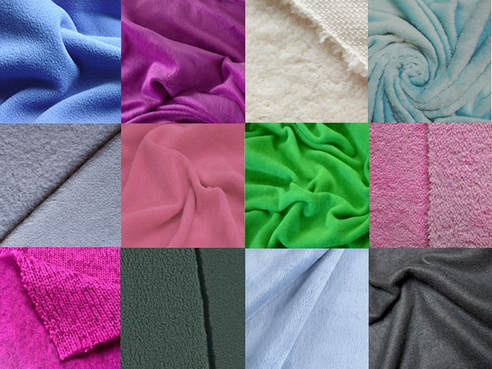
Let's start with this: as a noun, there are two broad definitions of Fleece.
- the coat of wool from a sheep or goat.
- a soft bulky deep-piled knit or woven fabric used for clothing.
Well we aren't talking about wool or livestock here, so let's skip over that one. That second definition is getting a little closer, but it isn't enough. Under that definition, fabrics such as faux fur or velvet could be called fleece, and those definitely wouldn't work in most patterns that are designed for fleece.
So let's go a little deeper...
A bit better definition of the type of fleece that have the characteristics that we are going for might be "a soft deep-napped insulating knit fabric made from polyester". Now we're getting somewhere! Broken down, this gives us several more specifics to go on:
- soft - the texture should be soft to the touch, both on the surface and when holding or squeezing the fabric.
- deep-napped - the fabric is brushed to raise the fibers. In the case of the kind of fleece that we want, the brushing raises them high (deep) enough to give it that squishy nubby texture (as compared to a lightly napped fabric such as flannel).
- insulating - the construction of the fabric means it can trap air between the fibers, allowing it to hold warm air close to the body.
- knit - though the first definition included wovens, this definition is specific to knit fabric. Woven fabrics are created like an interlocking grid, with fibers crossing over and under one another (weaving together). Knit fabrics are created by looping the fibers together (as in handknitting with yarn), which is what gives it the ability to stretch.
- polyester - the fleece intended for most fleece patterns is polyester. In fact, historically, "polar fleece" was originally created to be a synthetic alternative to wool, and is now even being made with recycled bottles (neat, huh?!) Over the years though, it has developed in different ways, including variations that make use of natural fibers. However, whether or not these other types of fleece will work in a pattern designed for polyester fleece depends entirely on how much stretch the blend has.
I'm still not sure... is THIS fleece, or not?
I think now is a good time to get some visual help, showing you exactly what you might encounter in your local fabric store with "Fleece" on the label.

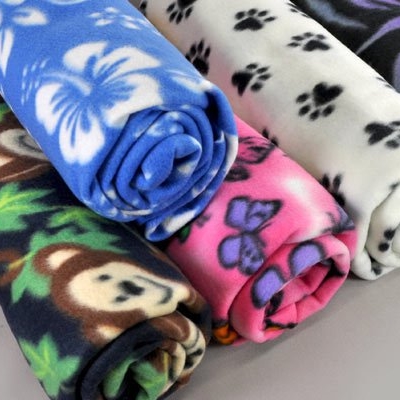
In my patterns, and in most other patterns that are designed for fleece, what you see here is the type of fleece that is intended. A common name for it might be "Polar Fleece", but this name is trademarked by the original creator of the textile (Polartec, previously Malden Mills), so it's sort of like using the term kleenex for facial tissue, even if that's not the actual brand in the box. Actual "Polar Fleece" from Polartec is high quality and is still created to be used as high-performance athletic fleece.
Because the company purposely did not patent the textile (to ensure it became widely known and accepted), it is made by many other companies, but they are supposed to call it something else. You will find it in stores and online being called Blizzard, Igloo, Arctic, or others.
This type of fleece commonly comes in a wide variety of prints, and the quality and weight can vary as well. It is also important to note that it is soft on both sides. The two sides can be obviously right and wrong (one side more raised than the other), or it may be hard to tell.
Slight variations of the above-mentioned fleece include Lambskin, Anti-pill, and Micro Fleece.
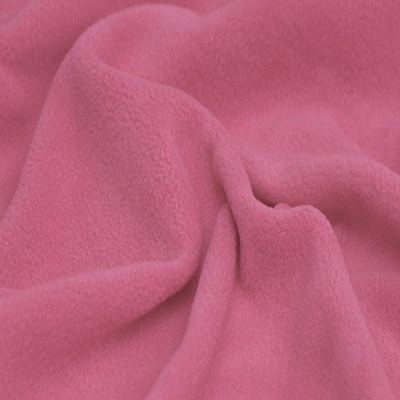
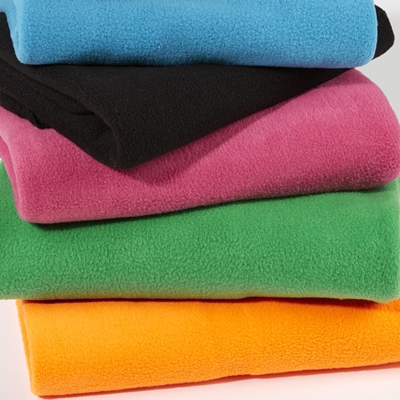
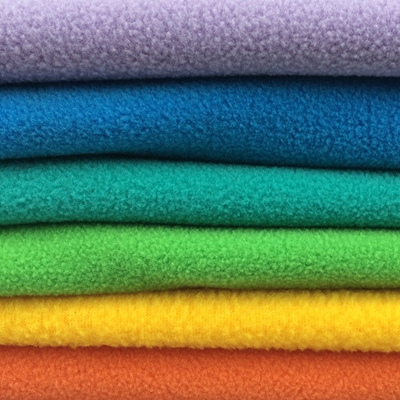
Lambskin fleece looks the same as the fleece in the above category, but when you reach out and touch it you can feel the difference. This is a thicker and stretchier fleece, soft like butter and a bit more "squishy". This variation is absolutely heavenly to wear... but it's a little trickier to sew. It has a thicker pile (the height of the raised fibers), but is a little more loosely knit, which allows it to capture more air between the fibers. This makes it a bit slippery to deal with, and when you cut it the edges might stretch out more easily.
Lambskin fleece is NOT to be confused with a "cuddle" or "plush", which I will show the differences in below. Lambskin looks the same as the Polar/Blizzard/Arctic fleece, it just feels different. If sewing with Lambskin fleece, I suggest using a stretch stitch and a walking foot, if you have one, and using lots of pins to keep it from slipping around.
Anti-pill Fleece is fleece that was either made with the fibers more densely packed than regular fleece, and/or it has gone through an extra step in its production. With all fleece, after the fibers are brushed to raise them they are cut to a consistent height. With anti-pill fleece, those fibers are cut a bit shorter to reduce how much they will rub together over time (which is what create the pills, or little balls, on non anti-pill fleece).
Anti-pill fleece often looks a bit smoother, prints will appear more crisp, and it may feel a bit more dense. It may or may not have as much stretch as regular fleece... which can be important depending on the pattern you are using it for. Provided it has enough stretch for your pattern, it is sewn using the same needle and stitch as non anti-pill fleece.
Micro fleece is another variation that you might find in your fabric store or when shopping online. What makes a fleece "Micro" is simply that is is thinner than other similar fleeces, in all other ways it looks the same. Thinner is not the same as less dense though, as you can get a light microfleece that has been more loosely knit and would be perfect for a soft baby blanket, or a tightly knit microfleece suitable for athletic wear. Because it is thinner than other varieties of fleece, microfleece is also more flexible.
Now that we've gone over those very similar types of fleece... let's talk about some of the other kind of textiles that might also be called "fleece".
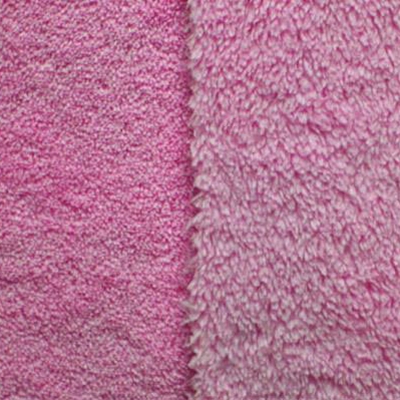
Cuddle/Plush
This is a type of fabric that may be called fleece as well... and here's where some of the names get really confusing. In some places, this is called Coral Fleece, in others (here in Canada, for example) it is called Plush, and in still others it is called Cuddle. However, "Cuddle" and "Plush" can also mean a totally different fabric, also known as Minky (more about that below). It's no wonder there is confusion sometimes!
For the purpose of this post, the Cuddle/Plush fleece that I'm going to talk about is a deep-pile brushed fabric that is soft on both sides, but which is really quite a different texture than the fleeces previously mentioned. Cuddle/Plush is so soft and thick that it is often slippery to work with. When you cut it, the edge will shed lots of fibers. It is also more loosely knit, so if you do not finish the edges they will continue to shed and you can actually damage the fabric if you stretch the edge too much. (The above types of fleece will not shed or loose integrity along a cut edge). In the photo here, this Cuddle/Plush has shorter fibers on one side and longer fibers on the other side, but Cuddle/Plush can also have the longer fibers on both sides.
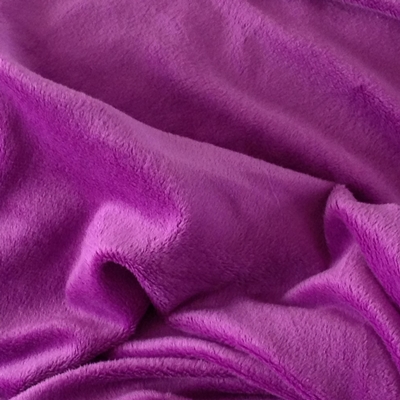
Minky
Minky is a luxurious fabric that may also be found in the fleece category. In most countries, this is the common name for this type of fabric, but in the UK there is a pre-existing trademark on the name Minky, so they use a different name for it there. Once you see and understand the differences between this fabric and the one above though, you will know how to tell them apart.
While very soft, it differs from other fleece in that it is also very smooth and has a definite sheen. The feel is like a furry silk. Most minky is one-sided, with the brushed fibers on the right side and completely smooth on the wrong side. Minky can be smooth, or have raised texture like dots or embossed prints. You can get double-sided minky, but is is much more expensive. Single-sided Minky is thinner than most other fleece types, and doesn't have the same "cushy" feel.
Minky is not the easiest fabric to sew, as it is quite slippery. A walking foot helps a lot, and a ball-point or stretch needle will help prevent skipped stitches. Minky also does not have as much stretch as most of the other fleeces that have been mentioned, so be careful to test the amount of stretch before choosing to use it for a project. If it has the minimum amount that is needed, it is still likely not the best choice for areas that need as much stretch as possible, such as collars.
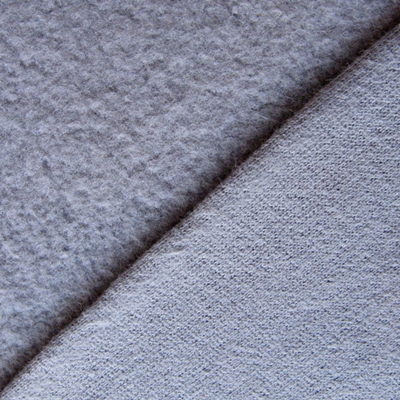
Sweatshirt Fleece
This is a type of fleece that is often seen under the "fleece" title, but you will see here how it is really quite different and, in most cases, would not be suitable to patterns that are intended for the types of fleece listed in the first section of this post.
Sweatshirt Fleece is what you would normally see used for joggers or hoodies if you were looking in a clothing store. It has a smooth right side, and a brushed wrong side. It also usually has very little stretch on the crosswise grain (selvage to selvage), and often for that reason would not be suitable to most fleece patterns. It may have more stretch on the lengthwise grain (down the length of fabric), but that usually isn't the way a print is oriented so that's something to keep in mind. Definitely check the stretch requirements in a particular pattern and do a stretch test before deciding to use Sweatshirt Fleece. There are variations of Sweatshirt Fleece as well, some of which do have more stretch than others.
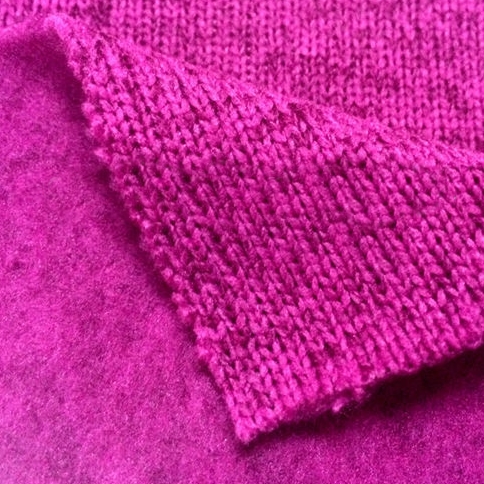
Sweater Fleece
Sweater Fleece might be more commonly known as Sweater Knit, but I have seen it listed both ways so I'm including it here as well. Sweater Fleece looks like a knitted sweater on one side but has the brushed look of fleece on the other. Depending on how tightly the sweater side was knit, it may or may not have enough stretch to work with a fleece pattern.
A couple more special Fleece fabric considerations...
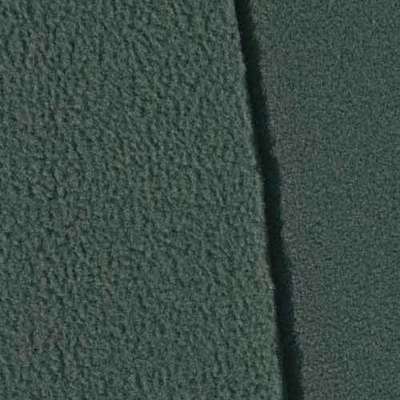
Athletic or Performance Fleece is another type of fleece you may encounter. Generally, these are much more expensive, but because they are created for a specific purpose, it's worth mentioning them here so you are not confused. Another name or type under this category of fleece is called Windpro. These are fleeces that are meant for extreme outdoor conditions. They are heavy-weight fleece, which means that it is densely packed to prevent wind and water penetration. It is less flexible and more felt-like in appearance and texture and has little stretch. Because of this, it is not suitable for most fleece patterns. Softshell Fleece is another type of performance fleece that has been bonded on one side with a waterproof yet breathable layer. This is amazing stuff for jackets... but it is really only suitable to patterns that are intended for outerwear or which do not need any stretch.
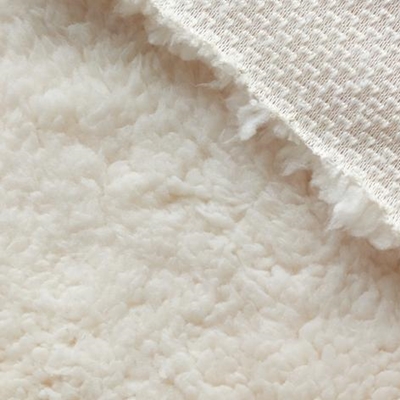
Sherpa
Sherpa, or Sherpa Fleece was created to mimic the look of actual sheep fleece. It is often white or ivory, but can also come dyed. It is characterized by thick bunched fibers that can be quite long... but only on one side. The back side of the fabric is not brushed or raised, and in some cases it has even been bonded with a suede or leather-like material. While some thinner non-bonded varieties may have some stretch, it is unlikely to be enough to work well with most fleece patterns.
Well... that was a lot to take in... Now What?
Now that you are full of knowledge about the different types of fleece that are out there... we need to talk about one of the most important qualities of fleece when it comes to whether or not you should use it for a particular project... STRETCH.
...But how about we save that for another day?
Watch for the next post in this series on Monday, where I will show you exactly how to do a Stretch Test using a few different types of fleece, as well as other fabrics that may or may not be suitable to a pattern designed for fleece.


